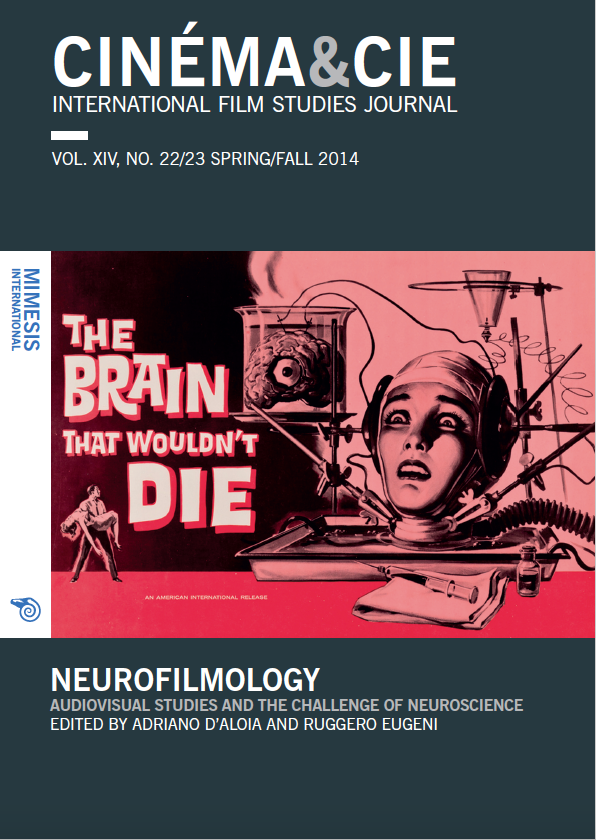The Feeling of Motion: Camera Movements and Motor Cognition
Abstract
Camera movements are considered a key element for the intersubjective relation between viewer and screen; nonetheless, their concrete effect on spectators’ experience still lacks the attention it deserves. This paper promotes an embodied approach to the study of camera movements, aiming to better understand the role of motor cognition during the film experience by analyzing the effects of camera movements on viewers’ motor cortex activation. We present an empirical high-density EEG neuroscientific study on camera movements, investigating viewers’ brain motor responses to different techniques like zooming, and the use of a dolly and steadicam.
This is triggered by the idea that each movement implies a particular form of physical relation between the audience and the movie. Indeed the experiment showed that the Steadicam determined the strongest activation in viewers’ motor cortex, providing first empirical ground to the notion of the capacity of the camera to simulate the virtual presence of the viewer inside the movie. This study shows how cognitive neuroscience can contribute to a better understanding of film style and techniques. Finally, this research demonstrates how film technique can be useful to cognitive neuroscience, by enabling the simulation of observers’ movements and, in so doing, allowing a novel approach to the study of action-perception links.






